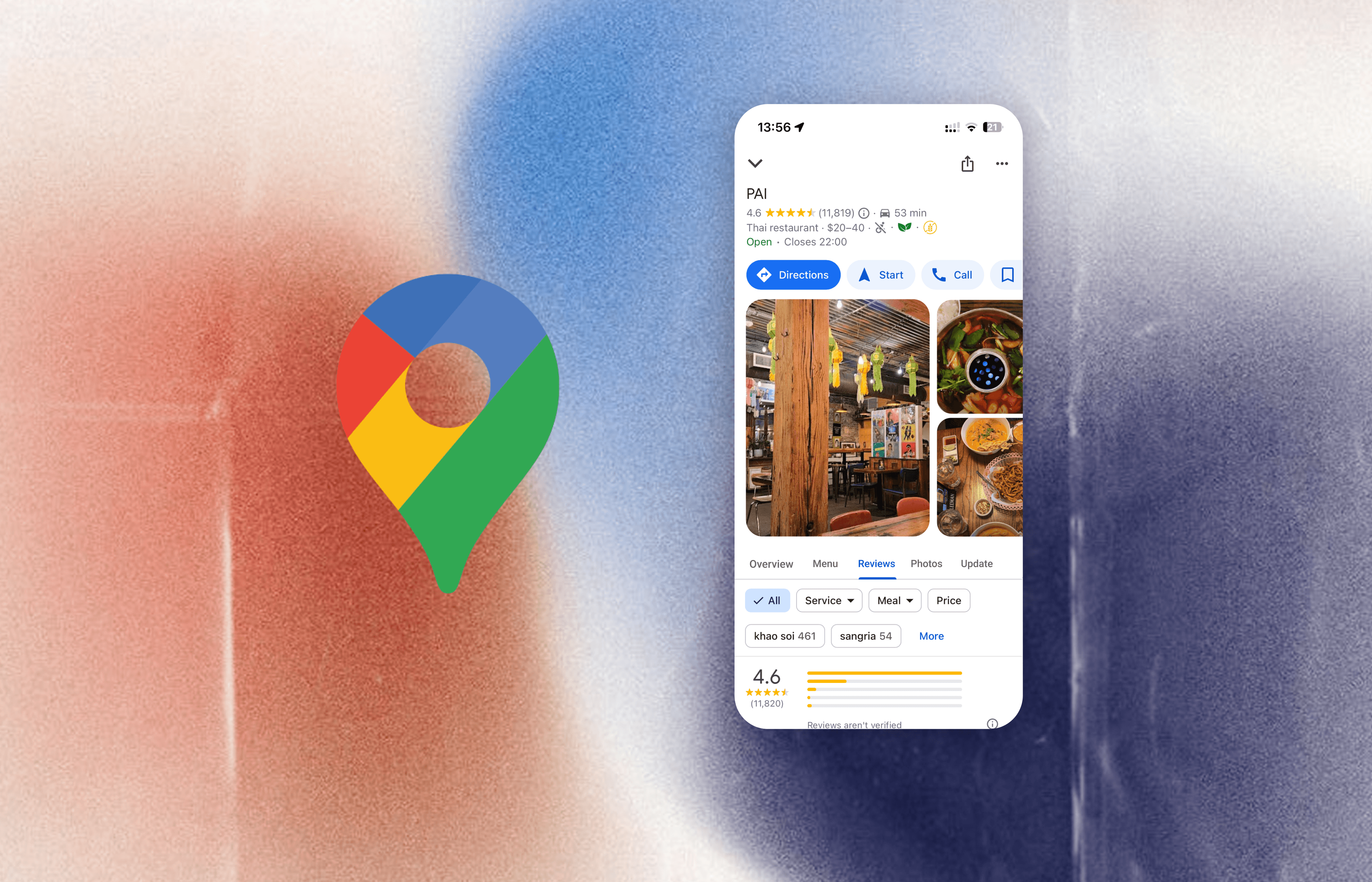
A Google Maps Redesign for Every Diet
timeline
March 2024
tools
- Figma
- Illustrator
- After Effects
tl;dr what did I do?
Redesigned Google Maps to better serve users with dietary restrictions
A focused redesign making dining with dietary restrictions less of a headache by enhancing Google Maps's existing functionality.
- → Initial ideation & concept exploration
- → User research interviews
- → Competitor analysis
- → Final designs & prototyping
Background
Me and my teammate Alisa Wu joined this product design sprint challenge with an exciting prompt: design a product to better the lives of people with dietary restrictions! Initially, we explored creating a standalone app, but our research revealed a crucial insight: users didn't need another app - they needed existing tools to work better.
Quick Overview
Ever tried organizing dinner with friends when someone has dietary restrictions? Yeah, it usually turns into a whole research project. After extensive user interviews and market analysis, we discovered that while many specialized apps exist, people consistently start their search on Google Maps. This insight led us to focus on enhancing this familiar tool rather than adding to the app fatigue, reimagining how Google Maps could better serve these users.

Final designs! Just a sneek peek into the work done overall.
The Real Problem
Here is the thing - finding food when you have dietary restrictions is not just about finding restaurants. It is about trust. Can you actually eat there safely? Is that menu online accurate? We discovered people were juggling multiple apps, making endless phone calls, and still feeling uncertain. Something had to change.
Diving Into Research
Instead of jumping straight to solutions, we went straight to the source. We sat down with people across the dietary restriction spectrum - from halal eaters to celiac folks to vegans. We even chatted with restaurant owners and dieticians to get the full picture.
Competitor Findings

Existing dietary apps face a classic chicken-and-egg problem:
- Users won't stick around without enough restaurant options
- Restaurants won't invest time without a large user base
- Users end up juggling between Google Maps, specialty apps, and phone calls
Previous solutions failed not because the idea was bad, but because they couldn't solve both sides of this equation - hence why we focused on enhancing existing platforms rather than building a new one.
User Findings
- Most users start their search on Google Maps but need multiple apps to verify information
- Restaurant information is often outdated or incomplete across platforms
- Users spend an average of 45 minutes researching before choosing a restaurant
- Trust is the biggest factor in decision-making


What People Told Us
'There are always options... it's just a matter of whether they are any good.'— Halal diner
'I tend to just stay home and cook. Going out is too risky.'— Person with celiac disease
These were not just inconveniences - these restrictions were actively shaping people's social lives. One thing became crystal clear: everyone starts their search on Google Maps, but that's just the beginning. They bounce between apps like Happy Cow, make phone calls, read countless reviews, and still end up uncertain.
"Make it a painkiller, not a vitamin."— Dietician's advice
We needed to solve the real pain points, not just add another option to the mix.
Process Work: AI Tag Suggestions

Early explorations of how AI could analyze reviews to suggest accurate dietary tags, reducing manual work for restaurants while increasing reliability for users. Such feature would also help the reviwers give more data/visability on other factors as the AI is trained on the previous tags of the restaurant
Core-feature: AI suggested tags based on review to encourage accurate food labeling.
The Solution: Building on What Works
Instead of adding another app to everyone's phones (let's be real, we have enough), we focused on enhancing what people already use - Google Maps. Think smarter filters that don't just say "vegan-friendly" but actually tell you about cross-contamination and preparation methods. We revamped the review system to make it easy to share and find dietary-specific experiences.
For restaurants, we kept it simple. They already struggle to keep information updated across platforms, so we created straightforward tools for declaring what they can safely offer. No complex systems, just clear communication channels between restaurants and diners.

More core features: Easy endorsments on specific food options and visability on dietary restiction on restaurants cards.
Takeaways
This is not just about convenience - it is about freedom. The freedom to eat out without spending hours researching. The freedom to join friends without anxiety. The freedom to try new places with confidence.
We learned some big lessons along the way. Trust the basics - if everyone is using Google Maps, build on what works. Details matter more than broad labels - knowing about cross-contamination is as crucial as knowing menu items. And above all, keep it simple for both diners and restaurants.
Alot of our feedback after winning was judges asking "This was not a feature already?" which was nice to hear! We hope that Google implements this one day as it would make a huge differnce in the lives of many.